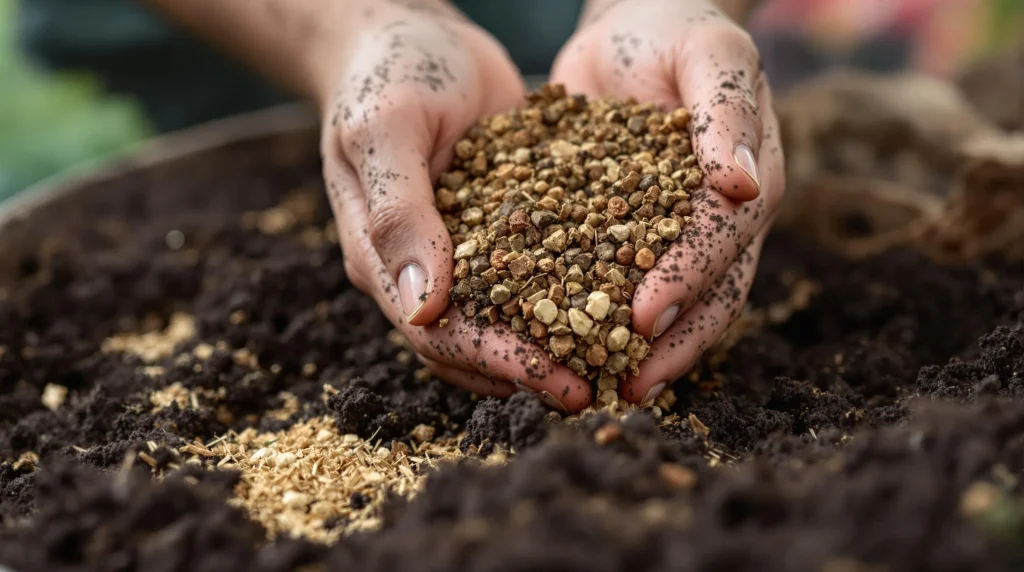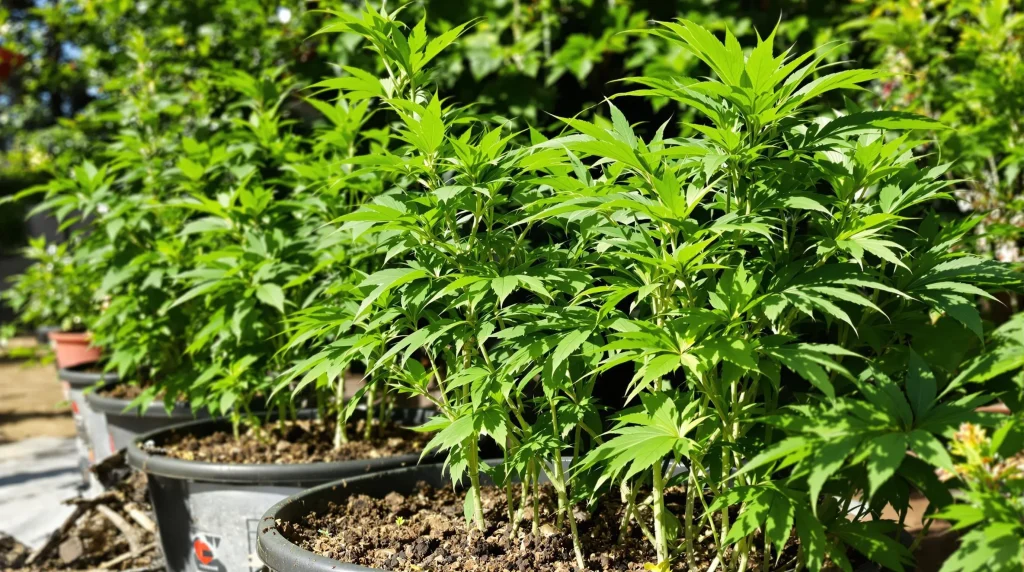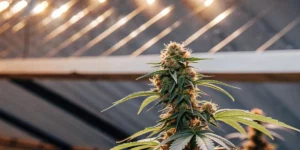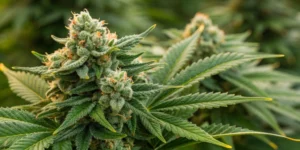Autoflower Super Soil
What Is Super Soil and How Does It Work?
Super soil is a nutrient-rich, organic growing medium designed to sustain cannabis plants throughout their lifecycle without requiring additional fertilizers. It’s essentially a “living” soil, full of beneficial microbes and organic matter that break down slowly, providing a steady release of nutrients. For autoflowers, which have a short lifecycle, super soil ensures they receive all the necessary nutrients at the right stages, making it an ideal choice for growers seeking simplicity and effectiveness.
By preparing super soil, growers eliminate the guesswork of nutrient schedules. The soil creates a symbiotic relationship with the plant roots, allowing cannabis to thrive naturally. This self-sustaining system mimics the plant’s natural environment, fostering healthier growth.
Why Autoflowers Thrive in Super Soil
Autoflowering strains, known for their rapid growth and resilience, benefit greatly from the balanced nutrient delivery that super soil offers. Autoflowers don’t respond well to nutrient overloading or inconsistencies, which makes super soil’s slow-release mechanism a perfect match. The organic composition also enhances the flavor and aroma profiles of the buds, delivering a superior final product.
Super soil’s ability to regulate pH naturally reduces the risk of nutrient lockout, a common issue in cannabis cultivation. This ensures that autoflowers remain stress-free, maximizing their genetic potential.
Key Differences Between Super Soil and Traditional Soil
Traditional soil often lacks the robust nutrient profile and microbial activity of super soil. While traditional soil may require constant monitoring and supplementation, super soil is preloaded with organic amendments, eliminating the need for additional nutrients. Moreover, super soil is designed to maintain optimal water retention and aeration, critical for healthy root development, unlike standard potting mixes that may compact over time.
Benefits of Using Super Soil for Autoflowers
Enhanced Nutrient Availability Throughout Growth
One of the most significant advantages of super soil is its ability to provide consistent nutrient availability. Autoflowers, which transition rapidly between growth stages, require a balanced diet to prevent deficiencies. Super soil meets these needs by releasing nutrients gradually, ensuring the plant always has what it needs to thrive.
Additionally, the rich microbial ecosystem in super soil facilitates efficient nutrient uptake. This not only boosts plant health but also enhances the overall yield quality, making it a favorite among cannabis cultivators.
Organic and Chemical-Free Growth Medium
Super soil’s organic nature ensures that plants grow without exposure to synthetic chemicals, which can affect the flavor and safety of the final product. For health-conscious growers and consumers, this is a significant benefit. Strains like Master Yoda Autoflower particularly thrive in super soil setups, making the most of its natural nutrient profile. The absence of synthetic nutrients also makes super soil an environmentally friendly option, reducing chemical runoff.
Growing cannabis in super soil results in buds that have a richer, more complex terpene profile. This contributes to a superior smoking experience, marked by enhanced flavors and aromas.
Improved Soil Structure for Healthier Root Systems
The composition of super soil promotes excellent water retention and drainage. This balance prevents root rot while ensuring roots have access to sufficient moisture. Healthy roots translate to vigorous plant growth, better nutrient absorption, and increased resistance to stress.
Furthermore, the aeration properties of super soil encourage robust root expansion. This is especially beneficial for autoflowers, which have a limited time to establish their root systems before flowering begins.
How to Create the Best Super Soil for Autoflowers
Essential Ingredients for Autoflower Super Soil
Creating super soil requires a blend of base soil, organic amendments, and beneficial microbes. Key ingredients include compost, worm castings, bat guano, bone meal, blood meal, and kelp meal. Each component contributes essential nutrients such as nitrogen, phosphorus, and potassium, along with trace minerals.
To ensure a thriving microbial ecosystem, consider adding mycorrhizal fungi and humic acid. These enhance nutrient availability and support root health, crucial for autoflowers’ accelerated growth.
Mixing Super Soil: Step-by-Step Guide
Start by mixing your base soil with organic amendments in a large container. A common ratio is 1 part base soil to 1 part compost and 1 part aeration material like perlite. Gradually add the nutrient amendments, ensuring an even distribution.
Once mixed, let the soil “cook” for 4-6 weeks. This curing process allows the organic materials to break down, ensuring nutrients are readily available when plants are introduced.
Curing and Storing Super Soil Before Use
Curing super soil involves keeping it moist and turning it regularly to maintain aeration. Store the soil in a cool, shaded area to prevent nutrient degradation. Properly cured super soil can be stored for several months, making it a practical option for growers planning multiple cycles.
Applying Super Soil in Autoflower Cultivation
When to Use Super Soil in the Growth Cycle
Super soil provides consistent nourishment, making it ideal for use throughout the entire growth cycle. For autoflowers, which have a short lifecycle, starting with super soil ensures that the plants receive a steady nutrient supply from seedling to harvest. Planting seeds or seedlings directly into super soil eliminates the need for transplanting, minimizing stress on the plants.
Pot Size and Super Soil Depth Recommendations
Autoflowers thrive in pots that balance root expansion with efficient nutrient delivery. Pots ranging from 3 to 5 gallons are ideal, providing enough space for roots to develop without wasting resources. Ensure the pot is filled with super soil to a depth of at least 8 to 12 inches, which accommodates the root structure of most autoflower strains.
The depth of the soil also influences nutrient availability and water retention. Shallower soil may dry out too quickly, while overly deep soil can lead to waterlogging. Regularly monitoring plant growth and adjusting pot size or soil depth accordingly helps optimize the benefits of super soil.
Adjusting Super Soil for Indoor and Outdoor Grows
Indoor growers have the advantage of controlled environments, allowing super soil to perform at its best. Using grow lights to maintain consistent temperatures and humidity levels ensures that the soil’s nutrient release aligns with the plant’s needs. Proper ventilation and air circulation further enhance the plant’s growth potential.
Outdoor cultivation requires adapting super soil to the local climate. In regions with heavy rainfall, additional drainage materials may be necessary to prevent waterlogging. Conversely, arid climates may require increased organic matter to improve water retention. Tailoring the soil’s composition to the specific growing conditions ensures optimal results, especially for strains like Tangerine Dream Autoflower, which benefit from well-balanced soil in varying environments.

Common Issues with Super Soil and How to Fix Them
Over-Nutrition and Nutrient Burn Risks
Over-nutrition, often referred to as nutrient burn, occurs when the super soil contains an excessive amount of amendments. This can manifest as yellowing leaves, crispy edges, or browning tips, which may hinder the plant’s growth. To address this, flush the soil with pH-balanced water to remove excess nutrients and allow the plant to recover. Keeping a careful eye on the plants during the early growth stages can help detect this issue before it escalates.
Preventing over-nutrition starts with properly balanced soil during the initial mixing phase. Using established recipes and adhering to recommended amendment ratios reduces the risk of nutrient burn. Regularly testing the soil’s nutrient levels, especially during the curing process, ensures that the mix is balanced for autoflowers’ specific needs.
Managing pH Levels in Super Soil
Super soil is renowned for its pH-regulating capabilities, but external factors like water quality can disrupt this balance. When the pH deviates from the optimal range of 6.0 to 6.5, plants may experience nutrient lockout. Regularly testing the pH of both the soil and water ensures that the plant’s roots can efficiently absorb nutrients.
Identifying and Solving Drainage Problems
Poor drainage is a common issue that leads to root suffocation, nutrient deficiencies, and an increased risk of fungal diseases. Signs of inadequate drainage include water pooling on the soil’s surface or slow absorption during watering. To improve drainage, incorporate coarse materials like perlite or vermiculite into the soil mix, which enhance aeration without compromising water retention.
Proper pot selection is also crucial for effective drainage. Ensure that pots have multiple drainage holes and are placed on surfaces that allow excess water to flow freely. Monitoring soil moisture levels before watering prevents overwatering and maintains an ideal environment for root development.
Alternatives to Super Soil for Autoflowers
Comparing Living Soil and Super Soil
Living soil is another organic option that shares many benefits with super soil. While both contain beneficial microbes, living soil focuses more on creating a self-sustaining ecosystem. However, it may require more maintenance compared to super soil.
For growers seeking a hands-off approach, super soil’s preloaded nutrients make it the more convenient choice. Both options deliver excellent results, enhancing the flavor and potency of autoflowers.
Using Organic Amendments in Standard Soil
Growers can enrich standard soil with organic amendments like compost or worm castings to create a cost-effective alternative to super soil. While this method lacks the sophistication of a pre-made super soil, it still provides the nutrients needed for healthy autoflower growth. When using amendments, ensure they are mixed evenly to avoid nutrient hotspots. Regular monitoring is necessary to maintain balance throughout the grow cycle.
Transitioning Between Soil Types for Autoflowers
Switching between soil types can be challenging but achievable with proper planning. Gradually introduce the new soil by mixing it with the old medium to minimize shock. This transition technique is particularly useful for extending the lifecycle of mother plants or regenerating harvested autoflowers.
Similar Strains
Tangerine Dream Auto
Tangerine Dream Auto is a flavorful autoflowering strain renowned for its citrusy aroma and balanced effects. This hybrid combines energizing sativa qualities with a calming indica undertone, making it a versatile choice for both day and evening use. Its robust growth and resilience to environmental stressors make it an excellent option for novice growers. With THC levels averaging around 18-22%, Tangerine Dream Auto delivers a clear-headed high that enhances focus and creativity.
Skywalker OG Auto
Skywalker OG Auto offers the potent relaxation of its parent strains, Skywalker and OG Kush, in a compact autoflowering form. Known for its earthy and pine flavors, this strain provides a deeply soothing experience, ideal for unwinding after a long day. Skywalker OG Auto thrives in both indoor and outdoor environments, requiring minimal maintenance to produce dense, resin-coated buds. With THC levels exceeding 20%, it’s a favorite among medicinal users seeking relief from pain and insomnia.
Corkscrew Auto-Tyson S
Corkscrew Auto-Tyson S is a unique strain celebrated for its spiral-like growth pattern and high THC content. This autoflower offers a blend of sweet and spicy flavors, accompanied by uplifting effects that gradually transition into relaxation. It grows well in super soil, benefiting from its rich organic nutrients. Corkscrew Auto-Tyson S’s fast flowering time and impressive resin production make it a top choice for growers seeking high yields with minimal effort.

FAQs About Autoflower Super Soil
Can I Use Super Soil for the Entire Growth Cycle?
Yes, super soil is designed to sustain plants throughout their entire lifecycle. Its slow-release nutrients cater to each growth stage, eliminating the need for supplemental feeding. Additionally, the microbial ecosystem within super soil ensures efficient nutrient uptake, creating an optimal environment for autoflowers to thrive. Monitoring plant health remains important, as certain strains or conditions may necessitate minor adjustments.
Is Super Soil Suitable for All Autoflower Strains?
Super soil works well for most autoflower strains, but some high-yielding or nutrient-sensitive varieties may require adjustments. Researching strain-specific requirements can help optimize the soil composition for best results. For instance, strains with high nutrient demands may benefit from supplemental feeds during flowering, even when grown in super soil.
Do Autoflowers Need Additional Nutrients with Super Soil?
In most cases, autoflowers do not need additional nutrients when grown in super soil. The slow-release mechanism provides a steady supply of essential elements, eliminating the risk of overfeeding. For particularly demanding strains or extended grow cycles, light supplementation with organic teas or foliar sprays can enhance performance.





